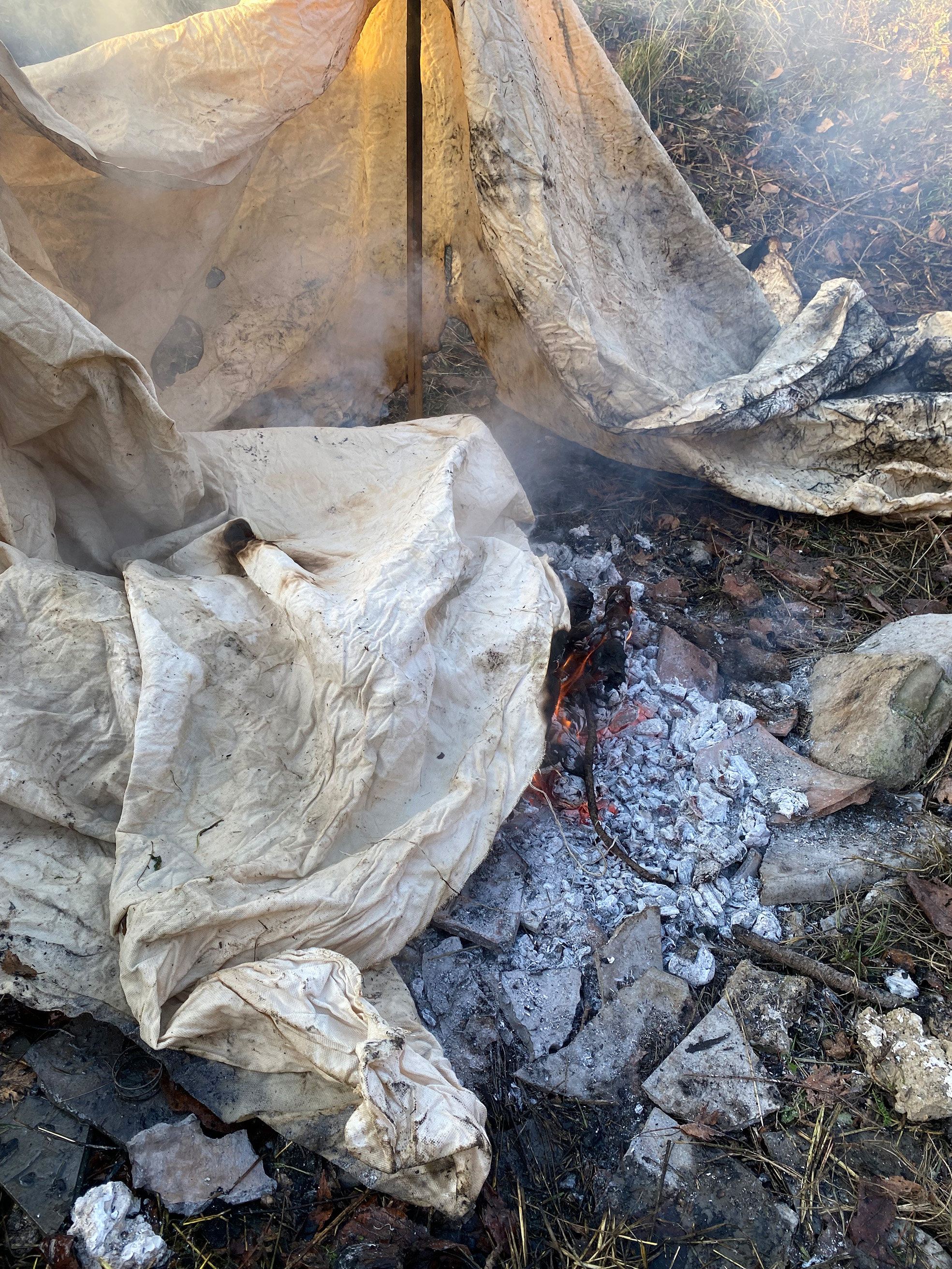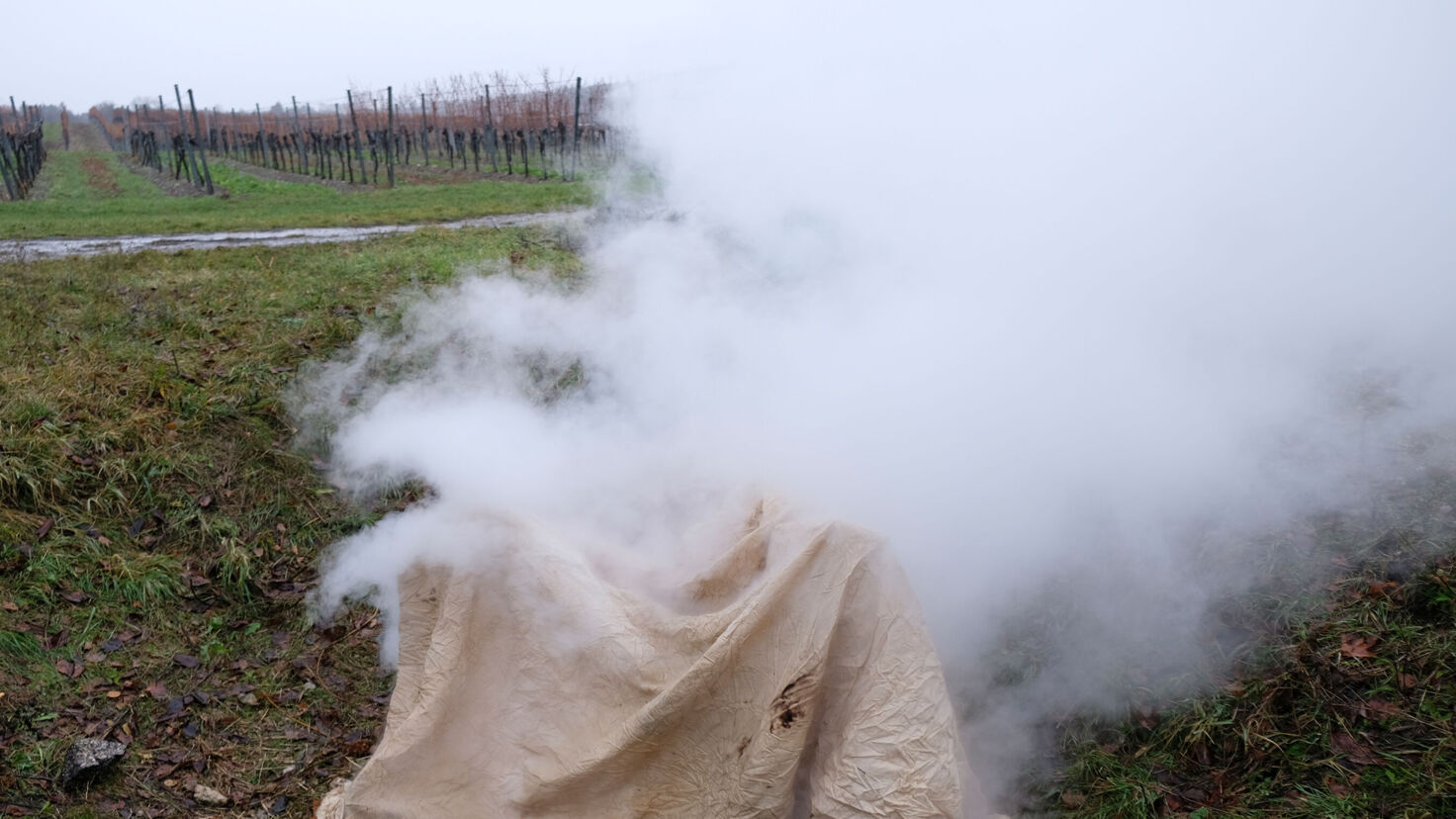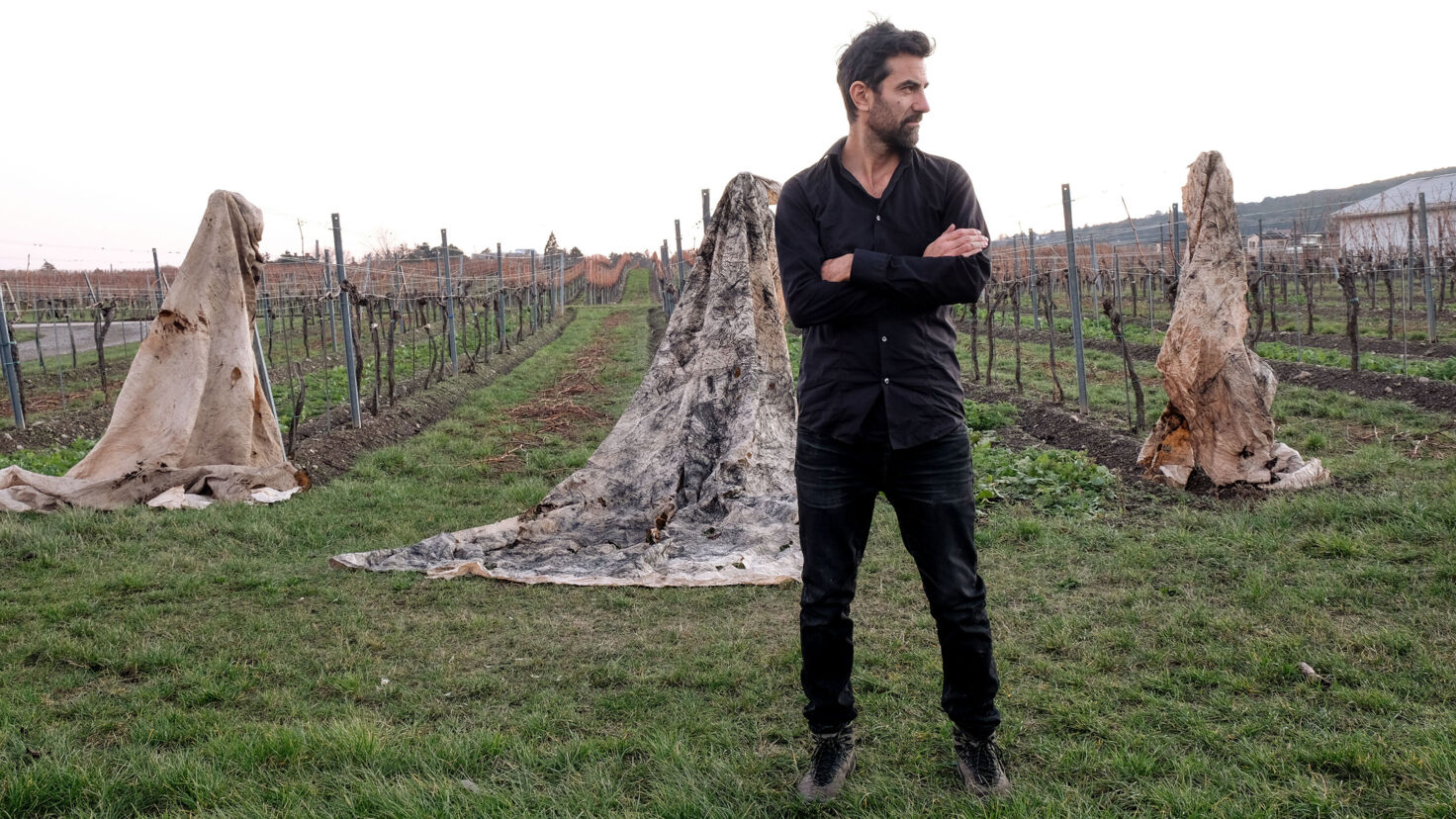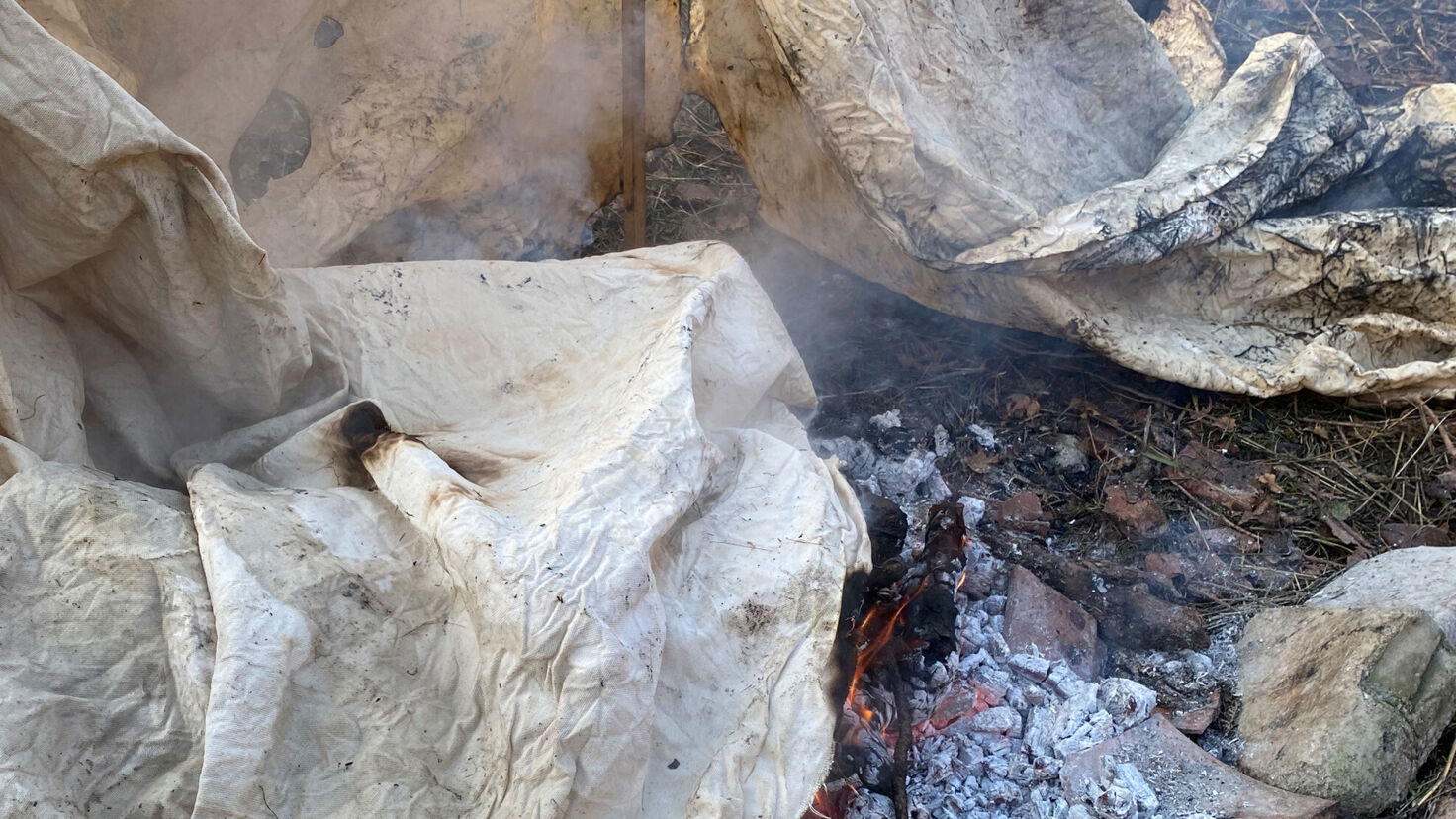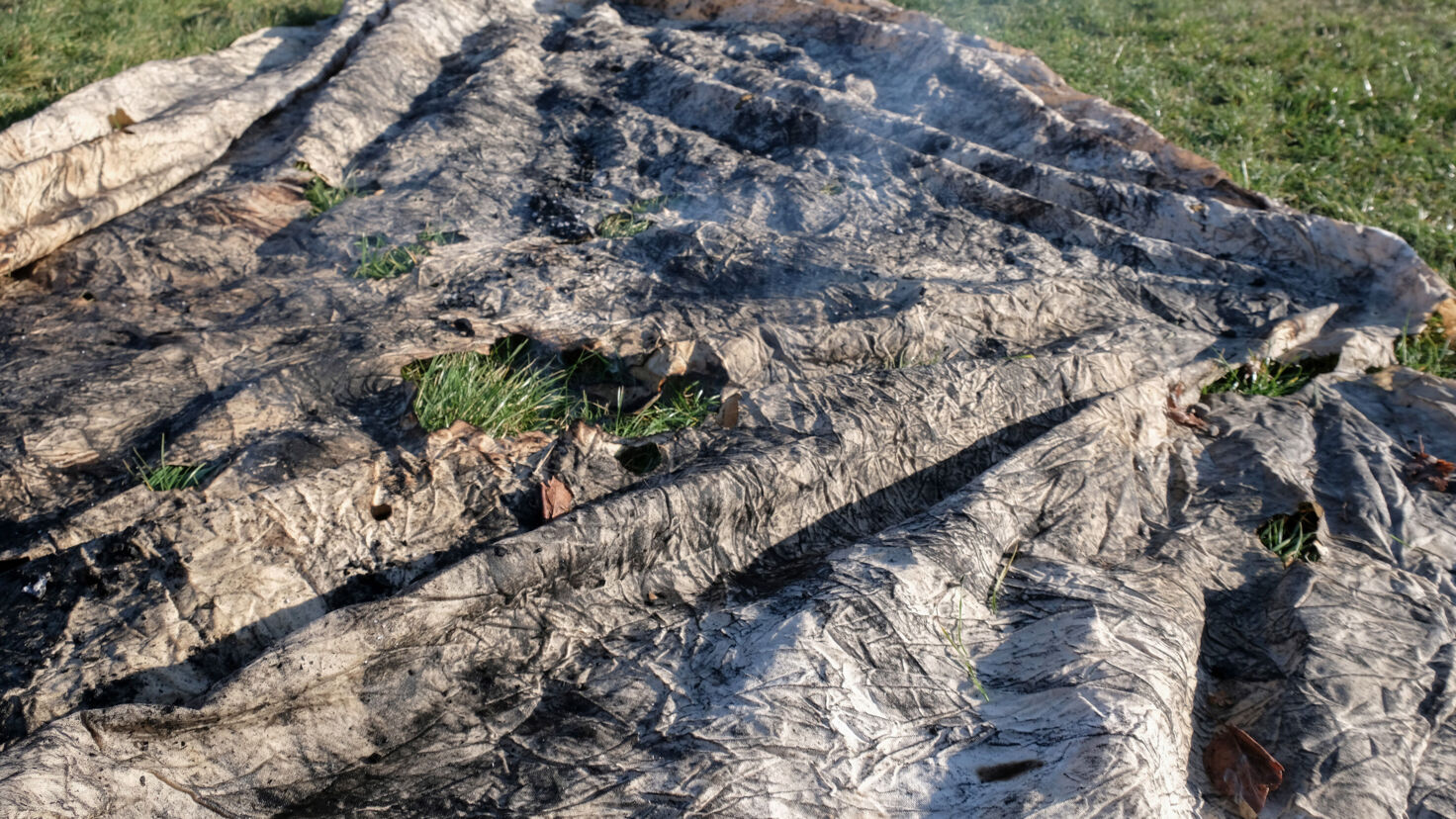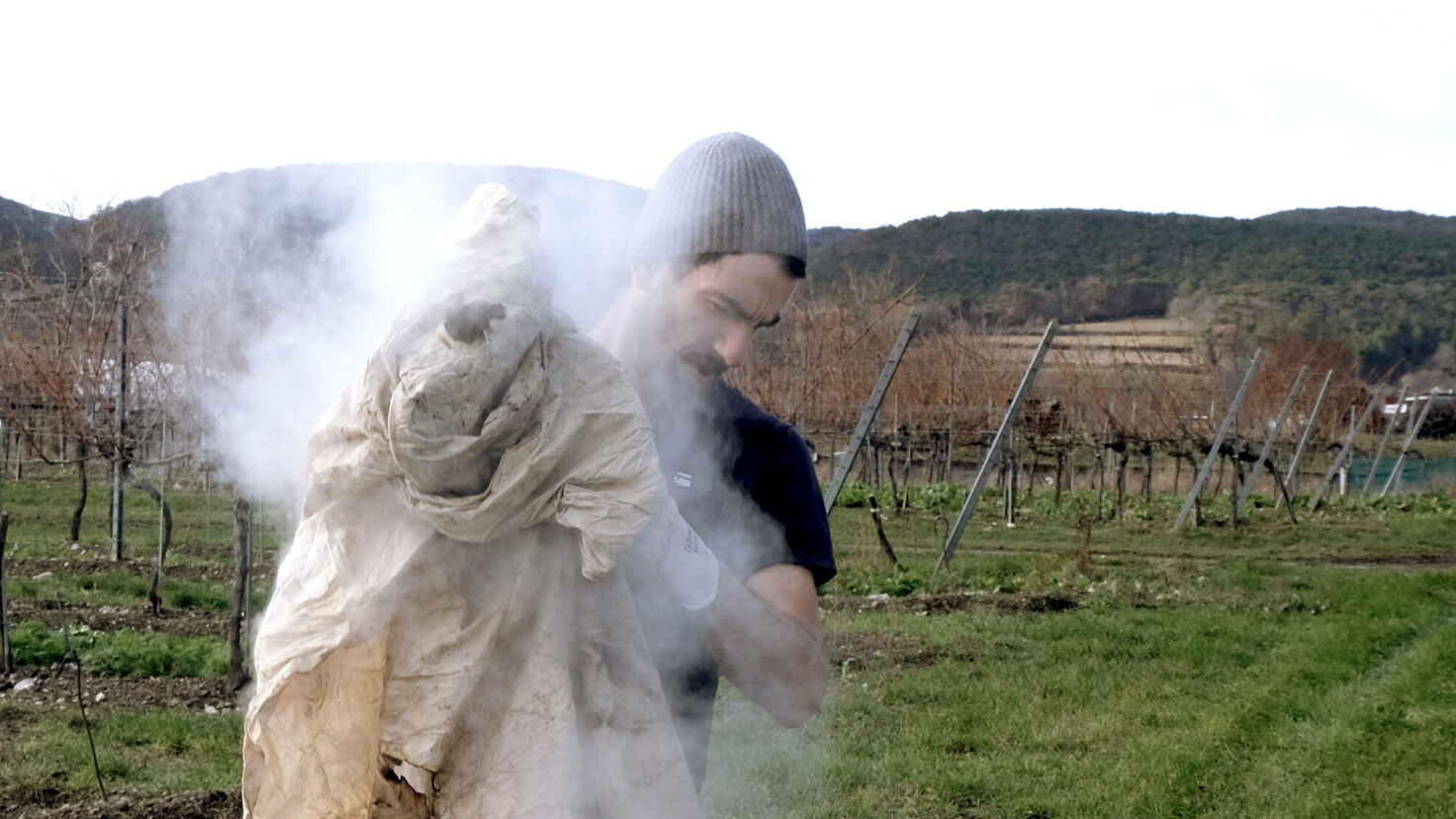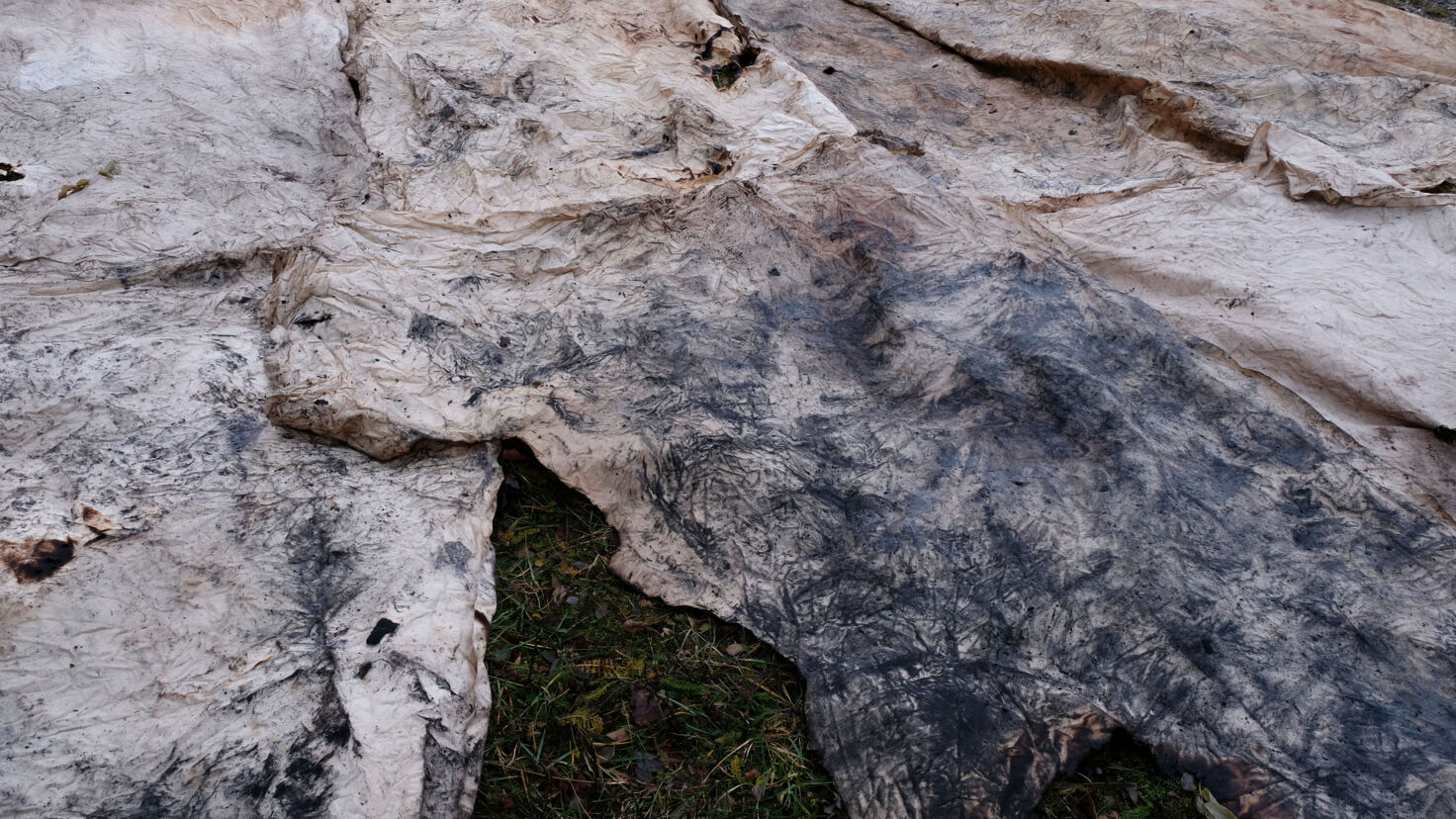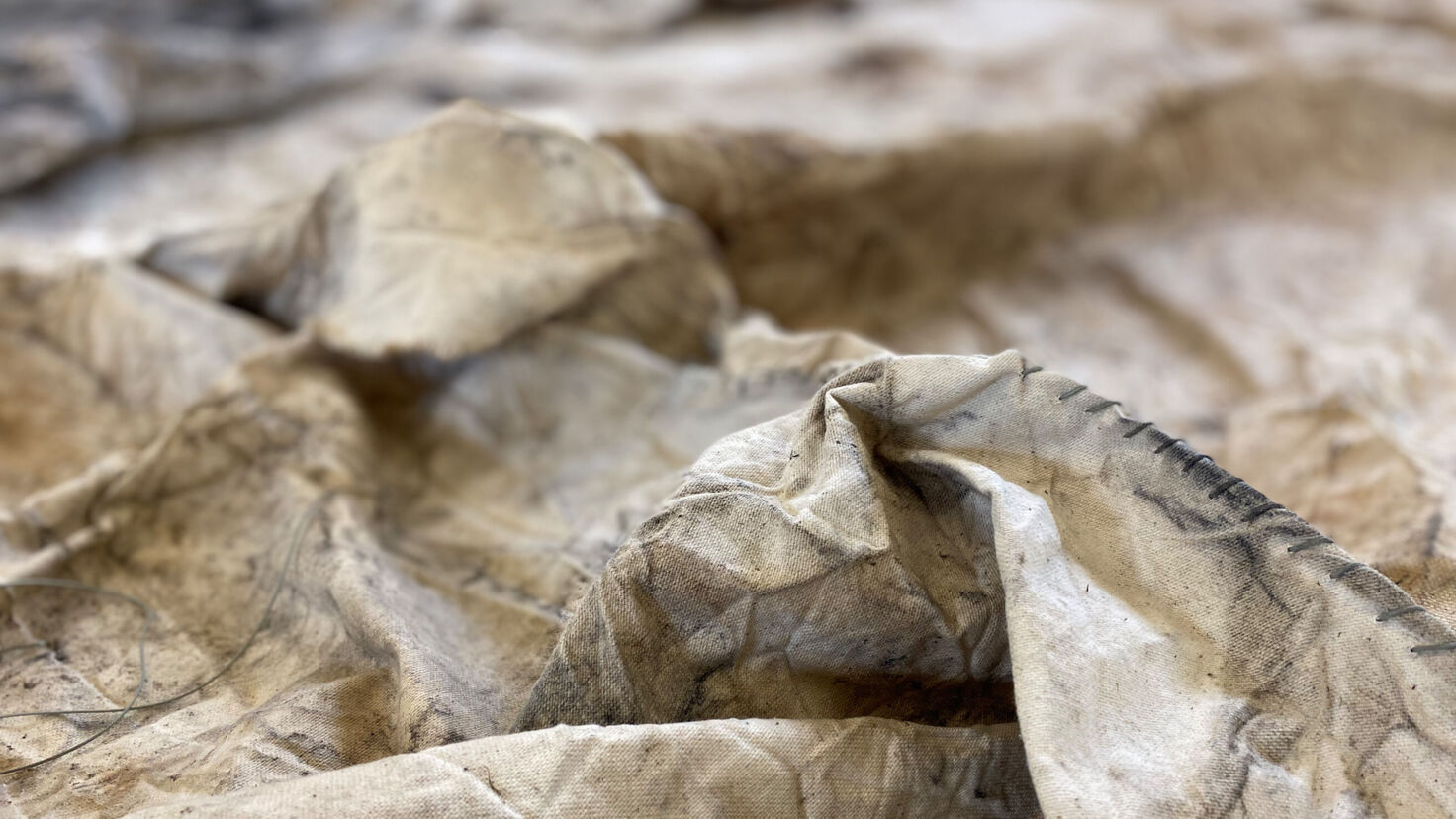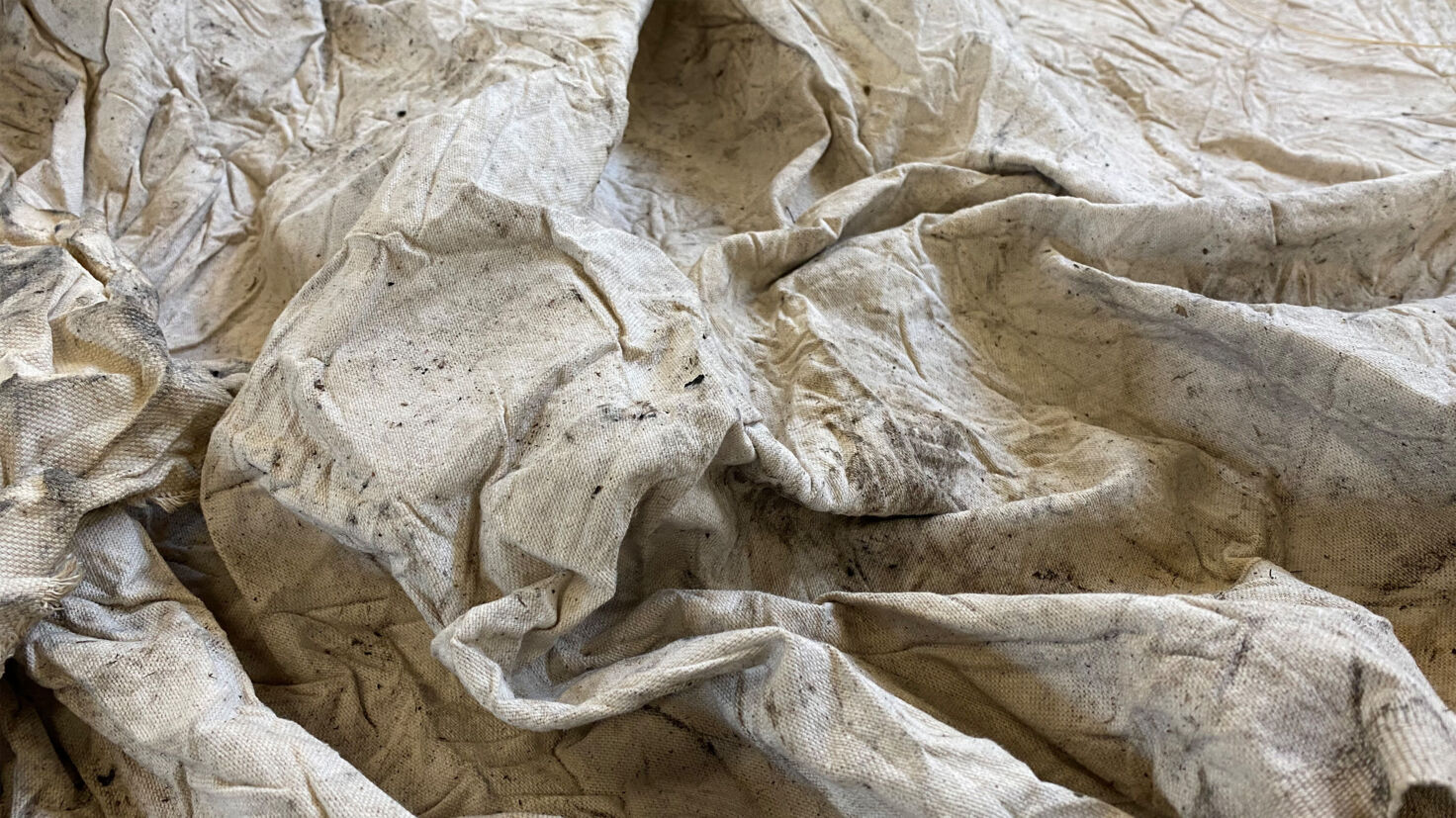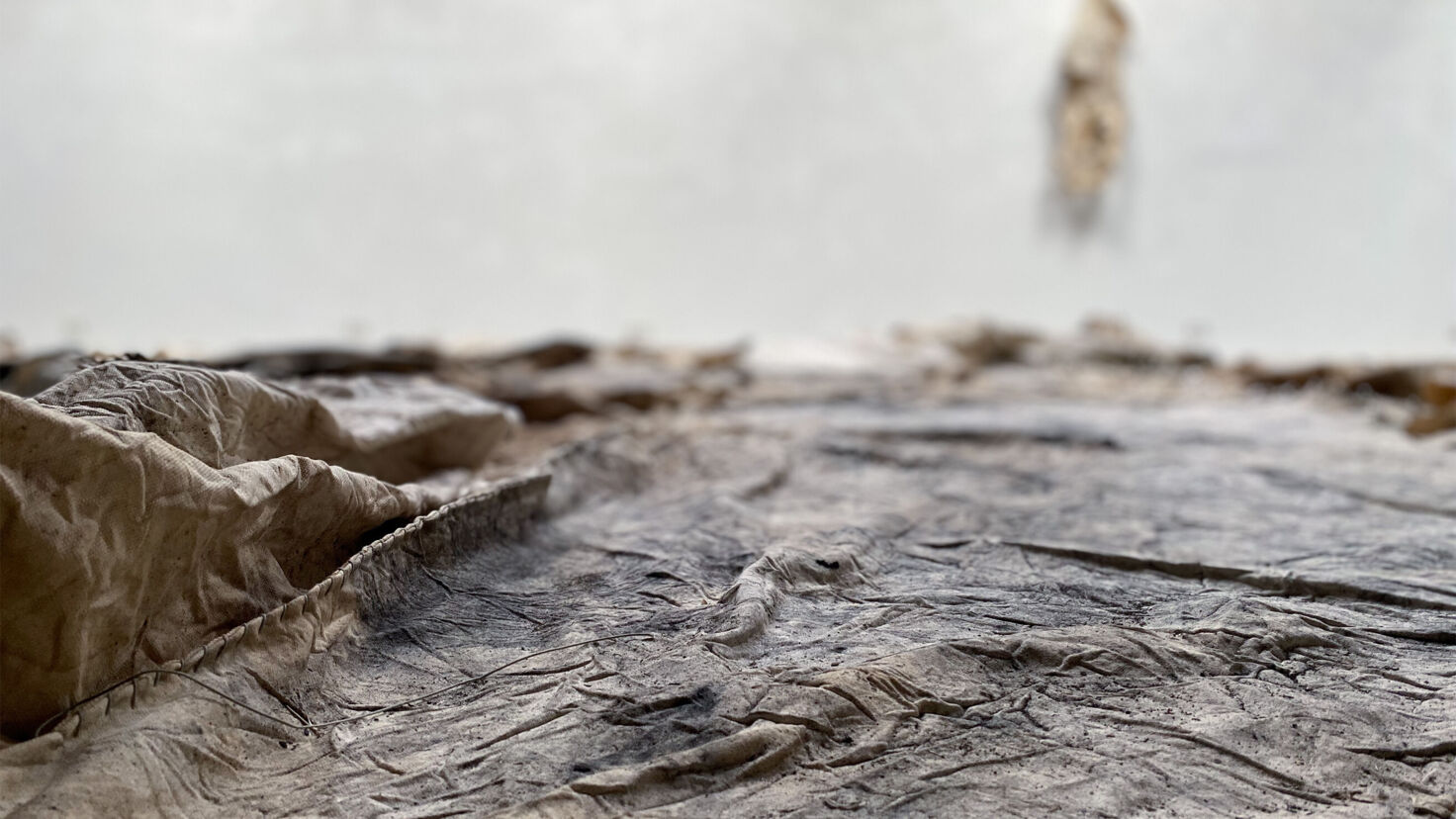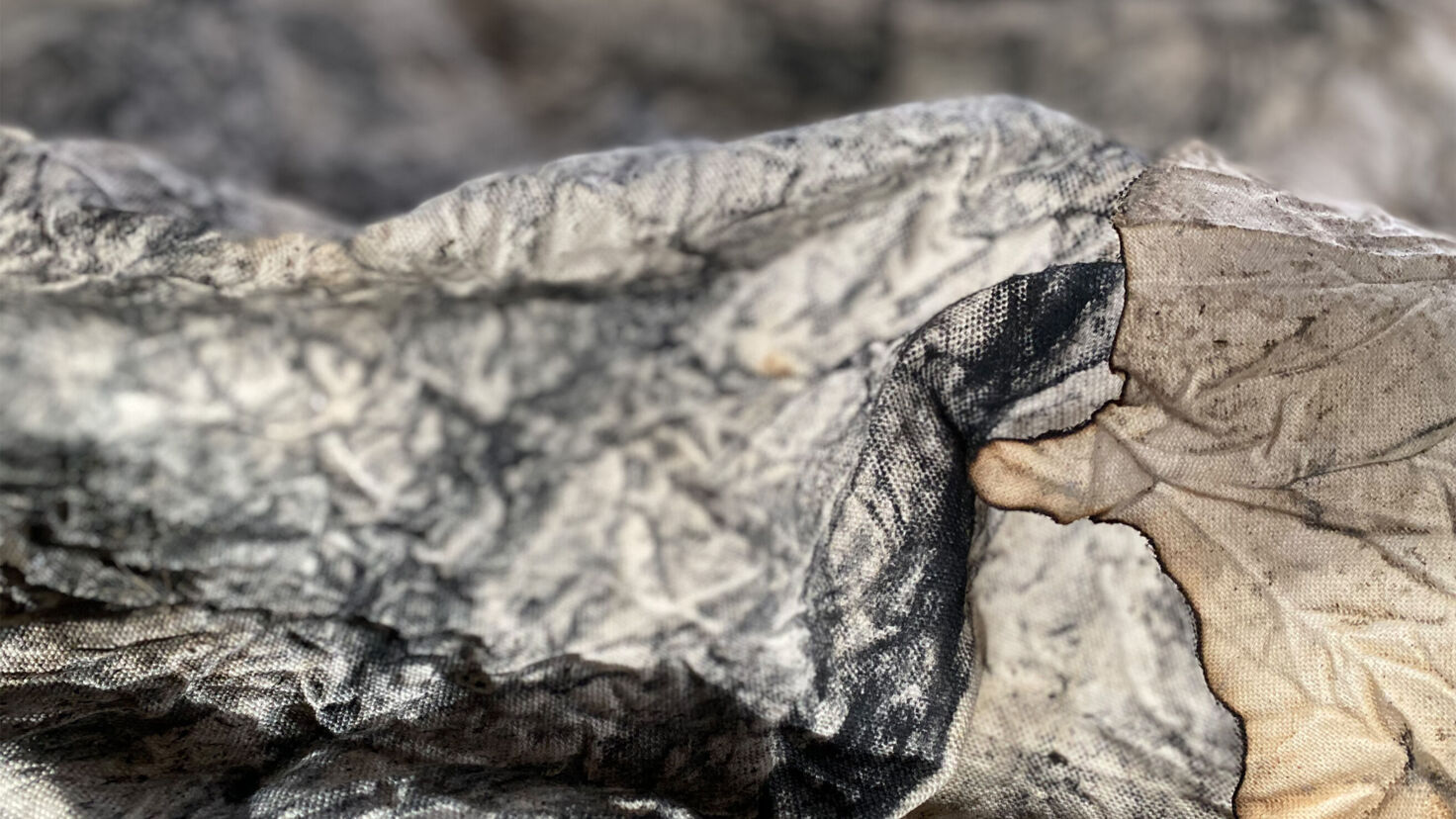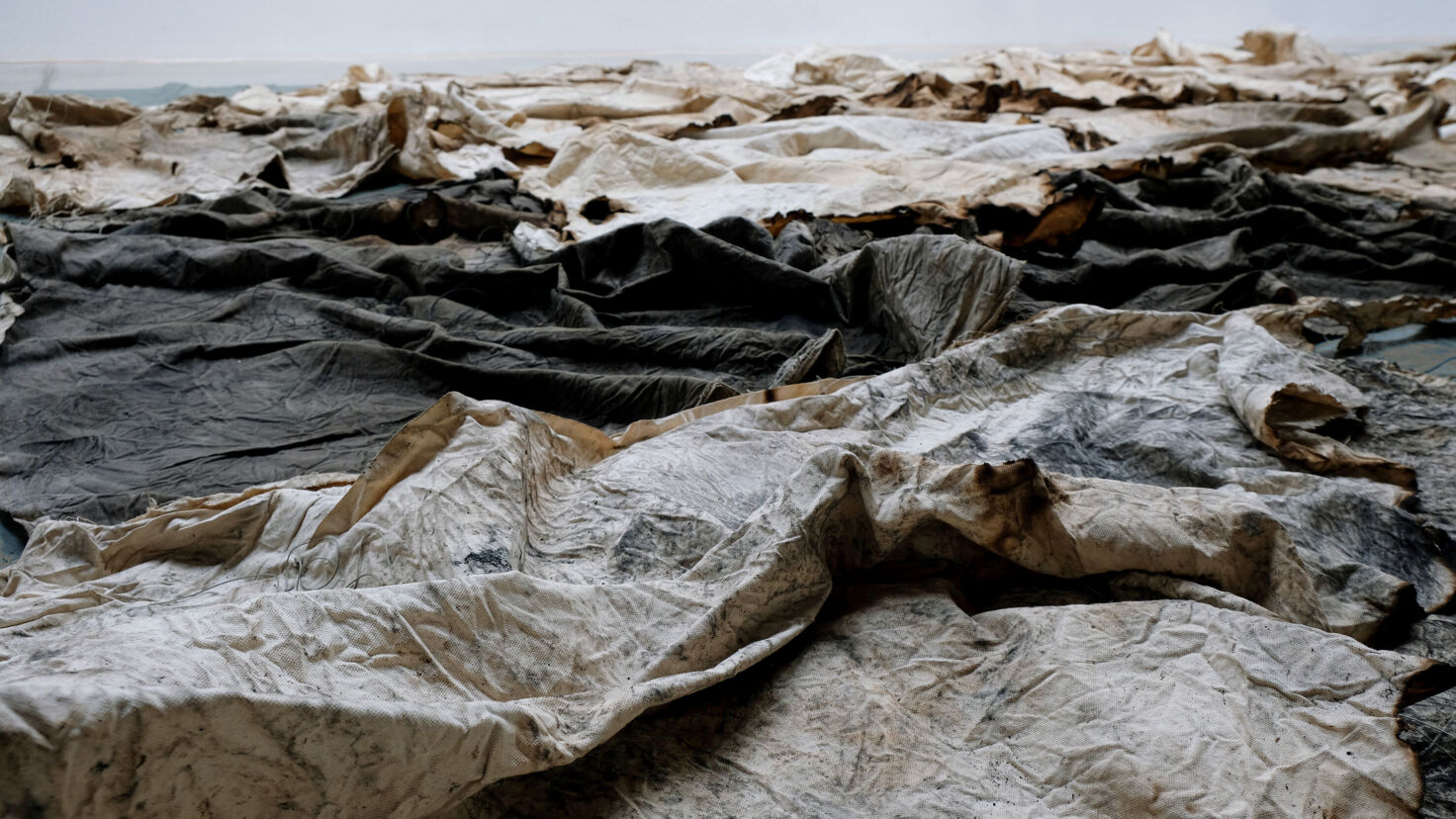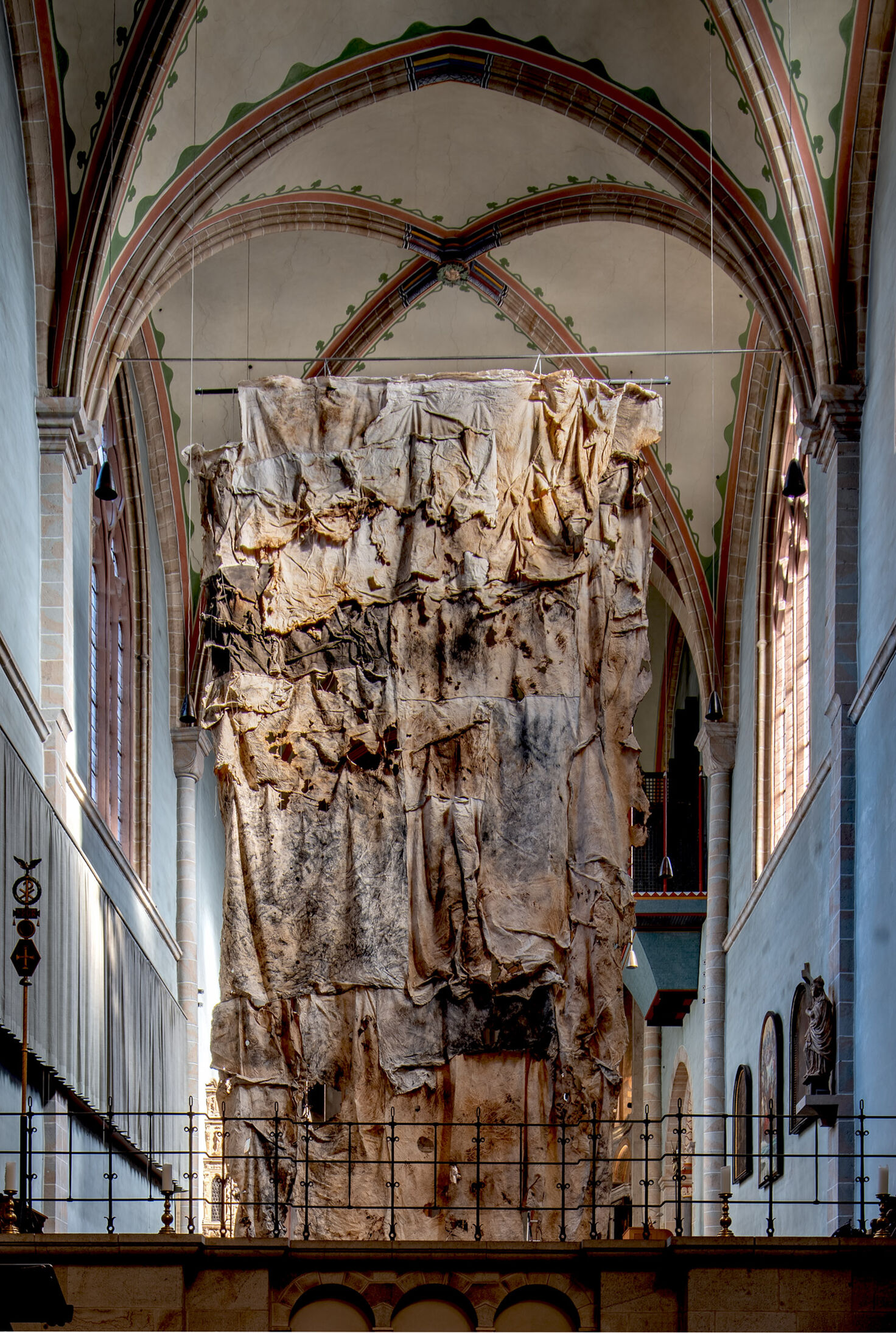
Traces of Fire
DIE SPUREN DES FEUERS - deutschsprachiger Text
A PICTURE OF OURE TIME
Jakob Kirchmayr's Lenten veil for St. Michael's Church, Text: Dr. Klaus Speidel
Traces of Fire – The Lenten Cloth
By Jakob Kirchmayr
In summer 2023, I was invited to create a Lenten cloth for the St. Michaels Church in Vienna. I was drawn to the idea, even though the required dimensions - approximately 12 × 6 m - would exceed my largest works by almost five times.
In parts of the German-speaking world, Lenten cloths are also known as Hungertücher (Hunger Cloth) a term still echoing in expressions like am Hungertuch nagen (to suffer scarcity), reflecting real deprivation. To that idea, no richly painted image fits - no beauty or splendor. Instead, the task seemed to call for an engagement with simplicity: modesty, love, and sacrifice. I searched for a medium that would allow me to express what I felt. It didn't seem meaningful to cover the cloth with images and symbols when its very purpose is to cover images and symbols. Influenced by dire future scenarios, the strategies of large corporations, climate change, the accelerating global destruction of nature, and the horrific conflicts of our time, I ultimately turned from pens and paint to water and fire as transformative forces - earth, ash, smoke, and coal as coloring media. The traces of fire - apocalyptic and yet simultaneously beautiful.

It was December, and cold, rainy weather was forecast. I had hoped for rain-softened ground: wet earth, damp grass, and soaked textiles. The latter was necessary to prevent the fire from consuming the cotton too quickly. I had only a small window of time in which to realize my vision and I wanted to include the rain itself. And it rained, it poured - so that, alongside fire, earth, and air, all elements were present.
About 140 square meters of cotton fabric were cut into fragments and, in a vineyard in Lower Austria, treated with ash, earth, and coal, smoked, exposed to fire and rain. The fragments were then carefully sewn back together, gathered and crumpled - thus creating a work with a sculptural character, constituted of roughly twenty pieces.

I am often asked why I chose cotton and whether the fabrics were "old" with historic significance. My choice was pragmatic: cotton burns, and compared to linen, it is lighter in tone. The cotton's naturally light color was meant to reveal the many shades of smoke; linen would have been too dark. After the cloths dried, I spent about two weeks arranging the fragments into a composition. I was fortunate to find three helpers through the Vienna-based association Tralalobe. These people brought not only their energy to the sewing but also their stories of flight, survival from death sentences, and war.
The burned textiles lay on the ground; we sat on them and, stitch by stitch, brought them closer to becoming one.
One day Hana, one of the women, said, "the smell, and also the color of these cloths, reminds me of war," and she told us about April 7, 2003, when George W. Bush gave the order to bomb her hometown of Baghdad. Saddam Hussein was suspected to be in the Mansour district; as it later turned out, that assumption was wrong - people Hana loved lived in that neighborhood. "That day a sandstorm raged, the streets were full of red dust, you couldn't see anything, only hear," she recounted, and her family learned what had happened only from the radio. But the streets were sealed off, the phones no longer worked, the lines were destroyed. Eventually Hana made her way through Baghdad to search for the people she loved. The bomb had torn open a crater eight meters deep; five large buildings were completely destroyed - "no gardens anymore, no trees, no people," Hana said. All she found was a piece of familiar clothing, a torn pair of jeans.
Working with these people fills me with gratitude and makes this Lenten cloth the most valuable project I have been privileged to work on so far. These three people who fled feel such deep gratitude for things we take for granted: a safe place to live, water, food, a roof over one's head, the freedom to decide, the freedom to love. In this context, the excess that surrounds us feels repellent.
I wrote this text a year ago and now add to it because the political situation has deteriorated markedly. Our world seems to have reached a turning point, and we must be vigilant that our society does not fall apart. The United States is in the process of bidding farewell to the Western world in order to fraternize with authoritarian systems. For us Europeans, democracy, liberalism, the social state, freedom of expression, independent journalism, free love - human rights - are firmly bound to our way of life. Standing up for these values, and being willing to engage in dialogue, is enormously important right now. In this sense, the European Union, the union of states, the decision to live together in peace - is an incredibly precious good.
Russia's unlawful attack on Ukraine, the war in the Middle East, the struggle for geostrategic positions and for control over natural resources such as oil, gas, and rare earths - all this fuels the arms industry and sparks new wars, or rekindles old ones. There is an incredible amount of injustice and destruction - so much hatred - when the overarching goal of politics worldwide should be to protect the Earth as the basis of our existence. But comprehensive environmental protection would require a radical change in existing power structures and economic models - and at the same time we, as a society, must rethink our consumption.
Thus this Lenten cloth also contains pain and anger about global grievances - but perhaps also hope, for the many fragments of which it is made, burned and charred by fire, were brought back together into a single whole - together with people who have fled. On sunny days, light falls through the windows of the high choir of the Basilica of St. Gereon, and also through the burn holes - at least symbolically, a glimmer of hope.
Perhaps this cloth encourages us to reflect a little on our own actions, to handle our resources and one another more sparingly and thoughtfully, and to stand up for our values - if so, that would already be a great deal achieved. "We would rather die out than forgo excess," I recently read in an interview with Peter Sloterdijk. Looking around at the moment, I almost fear the philosopher might be right. If we take fasting literally, it is about renunciation. Perhaps the key to happiness lies in the simplicity of things, and in reduction.
Jakob Kirchmayr, January 2024 (Addendum in March 2025)
CONTRIBUTIONS IN THE MEDIA (German-language):
WDR, 25.03.2025
Hässliche Schönheit
Schon lange hat mich Kunst in einer Kirche nicht mehr so beeindruckt wie das Fastentuch, das noch bis Ostern in der Kölner Kirche St. Gereon hängt. Sendung/Text: Klaus Nelißen
KIRCHENZEITUNG KÖLN, 21.03.2025
2024 sorgte das 12 mal 6 Meter große Fastentuch, das Jakob Kirchmayr für die Wiener Michaelerkirche schuf, für Aufsehen. Jetzt ist das Kunstwerk in der Kölner Basilika St. Gereon zu sehen. Hier und da ermöglichen Lücken den Blick auf das Alabasterkreuz. Text: Dr. Guido Schlimbach
DER STANDARD, 10. März 2025
Wie das Fastentuch gerade eine Renaissance erlebt. Text: Johanna Ruzicka
Kraftvoll, verstörend: Das Fastentuch, das im Vorjahr in der Wiener Michaelerkirche hing, ist heuer nach Köln weitergereist.
KÖLNISCHE RUNDSCHAU, 5. März 2025
Auf Tuchfühlung. Text: Ingo Schmitz
Die Passionszeit beginnt: Österreichischer Künstler zeigt außergewöhnliches Fastentuch in St. Gereon. Am Aschermittwoch ist alles vorbei? Nicht wenn es um Kunstgenuss geht. Zum Start der Fastenzeit wird in St. Gereon ein Werk gezeigt, das in Ausmaß und Ausarbeitung einiges in den Schatten stellt.
DIE PRESSE, 25. Februar 2024
Augen-Fasten? Nicht mit diesen Tüchern! Text: Almuth Spiegler
Mit ästhetischer, aber auch biblischer Wucht nimmt das neue Fastentuch in der Wiener Michaelerkirche sich seinen Raum, sehr viel Raum. Es verhängt nicht nur den Hochaltar, sondern trennt gleich den ganzen barockisierten Chorraum ab: Sechs mal zwölf Meter messen die in schwere Falten gelegten, teils verkohlten Tücher, die der Tiroler Maler Jakob Kirchmayr hier aufgespannt hat. Was ist das nur?
BEZIRKS ZEITUNG
Wiener Spaziergänge: Michaelerkirche, März 2024
ZEITUNG DER ARBEIT
Ein Besuch der Michaelerkirche in Wien, März 2024
PUBLIK-FORUM
Durch Brandlöcher hindurchden Glanz erblicken, März 2024
PARNASS, Februar 2024
Am Aschermittwoch 2024 wird das Fastentuch Jakob Kirchmayrs in der Wiener Michaelerkirche präsentiert. Seine bisher größte, skulpturale Arbeit setzt ein Feuer-Zeichen. Es gilt endlich achtsamer mit unserer Gegenwart umzugehen!
HEUTE, 21. Februar 2024
Darum hängt in Michaelerkirche jetzt ein dreckiges Tuch
In der Michaelerkirche in der Wiener Innenstadt hat man sich heuer für ein besonderes Fastentuch entschieden. Die Meinungen darüber sind gespalten.
BEZIRKSFLASH, Montag, 19. Februar 2024
Innere Stadt: Polarisierendes Fastentuch
In der Michaelerkirche sorgt ein ungewöhnliches Fastentuch für Diskussionen.
RADIO WIEN, Montag, 19. Februar 2024
Das Fastentuch in der Michaelerkirche sorgt für Aufregung
Wien.orf.at, Montag, 19. Februar 2024
Das etwas andere Fastentuch
ORF WIEN HEUTE, Sonntag, 18. Februar2024
Reaktionen auf das Fastentuch in der Michaelerkirche - das Fastentuch in der Michaelerkirche in der Wiener Innenstadt scheidet derzeit die Geister. Es besteht aus zwanzig verbrannten Baumwolltüchern und soll den Zustand der Welt widerspiegeln. Gestaltet wurde es vom Tiroler Künstler Jakob Kirchmayr.
ORF SEITENBLICKE, Donnerstag, 15. Februar 2024
Fastentuch Präsentation - in der Michaelerkirche in Wien wurde im Zuge der Aschermittwoch-Liturgie das von Jakob Kirchmayr gestaltete Fastentuch präsentiert. 140 Quadratmeter Stoff, die zum Teil verbrannt und löchrig sind, sollen den Menschen die derzeitige Situation der Welt vor Augen führen.
